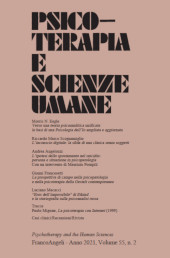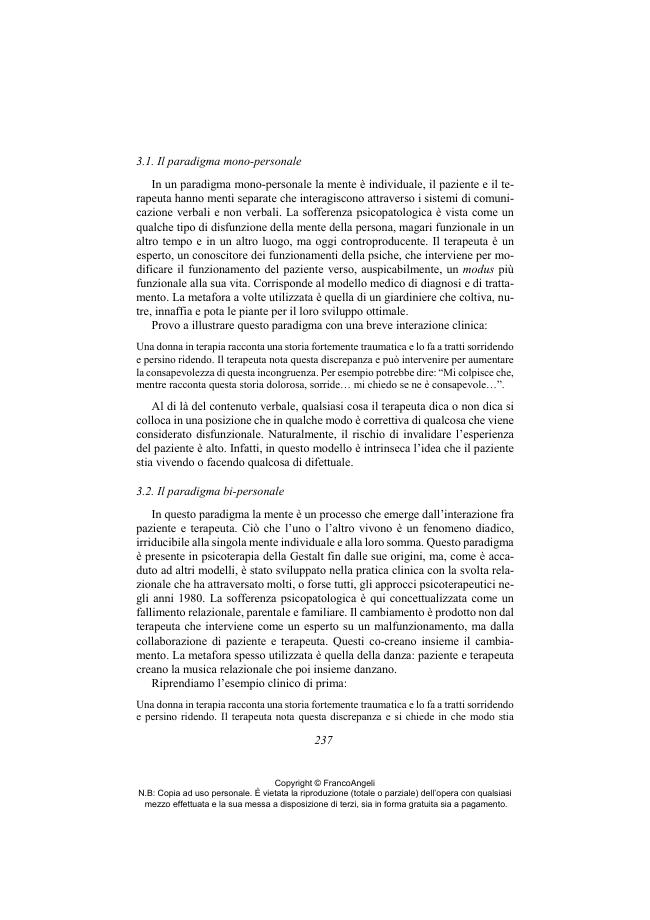La prospettiva di campo nella psicopatologia e nella psicoterapia della Gestalt contemporanea
227-246 p.
A partire dagli anni 1930, la psicoterapia della Gestalt si è sviluppata dalla psicoanalisi attraverso l'integrazione di altre influenze: la psicologia della Gestalt e la prospettiva olistica, la fenomenologia e il pragmatismo americano, le avanguardie artistiche berlinesi e in seguito newyorkesi, l'attivismo sociale e politico. Due concetti centrali di questo approccio sono la concezione del sé come processo emergente e la prospettiva di campo. In quest'ottica, l'esperienza del terapeuta e del paziente sono influenzate delle tensioni intrinseche alla situazione, cioè dalle intenzionalità del campo, che tendono a completare il processo di assimilazione di quanto non è stato attraversabile. La psicopatologia emerge nell'incontro come assenza, cioè difficoltà a essere pienamente presenti. Il processo terapeutico implica una partecipazione patica e corporea da parte del terapeuta, che lascia emergere quanto spinge per prender forma ed essere integrato.
Viene presentata una vignetta clinica per illustrare i tre paradigmi (monopersonale, bipersonale e di campo) utilizzabili per descrivere il cambiamento in terapia, e viene discussa una seduta terapeutica alla luce della teoria del campo. [Testo dell'editore].
Since the 1930s, Gestalt therapy developed from psychoanalysis integrating various influences: Gestalt psychology and the holistic perspective, phenomenology and American pragmatism, the artistic avantgarde of Berlin and later of New York, and social and political activism. Two of the core aspects of this approach are the concept of self as emerging process and the field perspective. In this view, the experiences of both therapist and patient are influenced by the intrinsic tensions of the therapeutic situation, i.e., by the intentionalities of the field that tend to complete the assimilation process of what has not been fully experienced. Psychopathology emerges in the therapeutic encounter as an absence, i.e., as a difficulty in being fully present. The therapeutic process implies an emotional as well as corporeal participation on the part of the therapist, who allows for the emergence of what in the field pushes to take shape and be integrated.
A clinical vignette is used in order to exemplify three paradigms that can describe the therapeutic change (the monopersonal, the bipersonal, and the field theory paradigms), and a detailed clinical case is discussed according to the field theory paradigm. [Publisher's text].
Fa parte di
Psicoterapia e scienze umane : LV, 2, 2021-
Articoli dello stesso fascicolo (disponibili singolarmente)
-
Informazioni
Codice DOI: 10.3280/PU2021-002003
ISSN: 1972-5043
PAROLE CHIAVE
- Psicoterapia della Gestalt, Psicopatologia, Teoria del campo, Sé, Atmosfera
- Gestalt therapy, Psychopathology, Field theory, Self, Atmosphere



